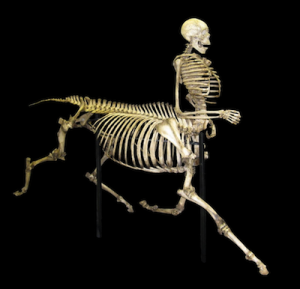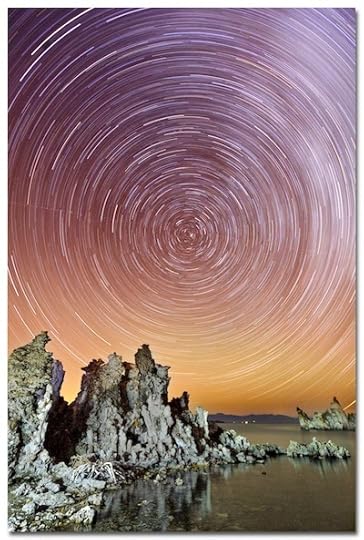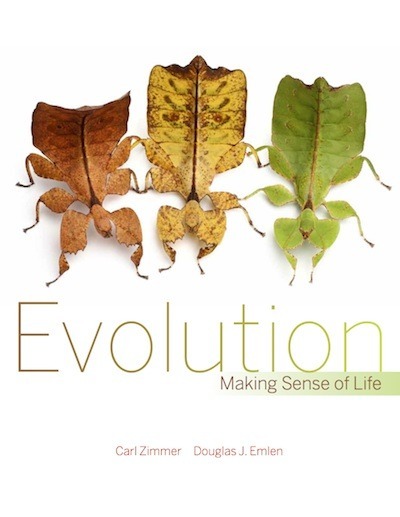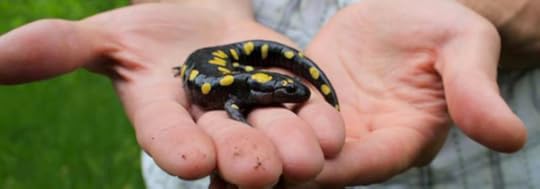Carl Zimmer's Blog, page 41
July 20, 2012
Why Whales Are Weird: Joy Reidenberg Explains
Here’s a video of a great talk about the evolution of whales that anatomist Joy Reidenberg gave at the recent PopTech conference. You may have seen her on the show Inside Nature’s Giants. Here’s my profile of Reidenberg this spring in the New York Times, in which I focused on what it’s like to take apart whales for a living.
Joy Reidenberg: Weird whales from PopTech on Vimeo.

July 19, 2012
The Mystery of the Missing Chromosomes, Continued: An Update From Your Preening Blogger
Wow, what people will do to avoid answering your question.
Last night I started asking the people who run a creationist Facebook page for the evidence to back up a claim of theirs about evolution. I was told to buy their book. When I was asked again, I was told nothing.
I ended up researching the latest on this particular aspect of human evolution–the fusion of two of our chromosomes millions of years ago–and wrote a blog post today.
This afternoon I got an email from the creationists.
Dear Carl,
I edit Discovery Institute’s Evolution News & Views website. We’d be interesting [sic] in hosting an online debate between you and a contributor to Science and Human Origins. There are interesting issues to address and this is, I think, a much better format for that than Facebook. Please let me know if you’re agreeable in principle. If so, we can nail down a specific topic to debate and go over any further parameters. The format would be a simple point-counterpoint-point-counterpoint, with each post limited to 1000 words and focusing strictly on the ideas, not on personalities.
Best wishes,
David
I’m fairly sure that this is legitimate, because it ...
The Mystery of the Missing Chromosome (With A Special Guest Appearance from Facebook Creationists)
 There’s something fascinating about our chromosomes. We have 23 pairs. Chimpanzees and gorillas, our closest living relatives, have 24. If you come to these facts cold, you might think this represented an existential crisis for evolutionary biologists. If we do indeed descend from a common ancestor with great apes, then our ancestors must have lost a pair after our lineage branched off, some six million years ago. How on Earth could we just give up an entire chromosome.
There’s something fascinating about our chromosomes. We have 23 pairs. Chimpanzees and gorillas, our closest living relatives, have 24. If you come to these facts cold, you might think this represented an existential crisis for evolutionary biologists. If we do indeed descend from a common ancestor with great apes, then our ancestors must have lost a pair after our lineage branched off, some six million years ago. How on Earth could we just give up an entire chromosome.
A close look at our genome and the genome of our close relatives reveals that we didn’t. We just combined a couple of them. Every now and then, chromosomes fuse. This fusion occurs as sperm and eggs develop, as pairs of chromosomes fold over each other and swap chunks of DNA. Sometimes two different chromosomes grab onto each other and then fail to separate.
Scientists have observed both humans and mammals with fused chromosomes. Chromosomes typically have distinctive stretches of DNA in their center and at their ends. From time to time, scientists will find an individual that’s short a chromosome, but one of the chromosomes it retains now has an odd structure, with ...
July 18, 2012
Chuck Norris, tapeworms, and the future of science: video of my keynote talk
Last month I gave the keynote lecture at the annual meeting of the Society for the Preservation of Natural History Collections. The society has just posted it on Youtube. I’ve cued it up below to the start of my talk, which came after some welcoming speeches at the start of the conference. In the spring, when the society asked me for a title for my talk, I called it “From Page to Pixel,” since it would be about the changes in science communication over the past decade. But then Chuck Norris came into my life, and things changed accordingly, as you’ll see…

July 12, 2012
Tomorrow on Science Friday: Arsenic Life and the Sausage-Factory of Science
I’m going to be a guest during the second hour of Science Friday on National Public Radio tomorrow. Host Ira Flatow and I will be discussing the latest twist in the ever-intriguing arsenic life saga, and, more broadly, the rough-and-tumble way in which science corrects itself. If you miss the live show, you can listen to it here.

July 11, 2012
Attention Iowa City! I’m headed your way
Tomorrow I’m flying to Iowa City for a couple talks. It’s my first time to the city and the state, so I’m looking forward to it. I hope some Iowa-based Loominaries can catch me at the following events:
Friday, July 13, 9 am, Medical Alumni Auditorium, University of Iowa: “Infecting Minds: Science Communication With New Media.” Sponsored by the Divisions of General Internal Medicine & Infectious Disease in the Carver College of Medicine and Department of Epidemiology in the College of Public Health. Details here.
Saturday, July 14, 1 pm, Macbride Hall, University of Iowa: “A Planet of Viruses.” I’ll be speaking as part of the Iowa City Book Festival. Details here.

July 8, 2012
Live-blogging Arsenic Life
 I’m spending the weekend in Ottawa, where a couple thousand scientists have gathered for the Joint Congress of Evolutionary Biology. I’m drowning in a torrent of fascinating talks, on everything from sexually cannibalistic crickets to the future of the Amazon’s biodiversity. In the evenings, the meeting features high-profile talks–Friday night, the science writer David Quammen spoke about his career, on the occasion of winning the Stephen Jay Gould Prize. I have a particular interest in tonight’s talk, so much so that I’m going to live-blog it. The speaker is one Rosie Redfield, and she’ll be talking about the endlessly intriguing case of Arsenic Life.
I’m spending the weekend in Ottawa, where a couple thousand scientists have gathered for the Joint Congress of Evolutionary Biology. I’m drowning in a torrent of fascinating talks, on everything from sexually cannibalistic crickets to the future of the Amazon’s biodiversity. In the evenings, the meeting features high-profile talks–Friday night, the science writer David Quammen spoke about his career, on the occasion of winning the Stephen Jay Gould Prize. I have a particular interest in tonight’s talk, so much so that I’m going to live-blog it. The speaker is one Rosie Redfield, and she’ll be talking about the endlessly intriguing case of Arsenic Life.
Before Redfield takes to the stage at 7:30 pm ET, I want to write a short preface. In December 2010, rumors swirled for a few days that NASA had discovered alien life. When they finally held a press conference, the world discovered that a team of scientists had found a species of bacteria at Mono Lake in California that appeared to be able to build DNA out of arsenic. If true, it would be unlike any known life on Earth.
Rosie Redfield, a microbiologist at the University ...
Presenting “Evolution: Making Sense of Life” (and a free app!)
 As I’ve mentioned a couple times, I’ve been working for a couple years with biologist Douglas Emlen on a new textbook about evolution, intended for biology majors. It’s scheduled to be published next month, and we’ve gathered some gratifying endorsements. Here are a selection:
As I’ve mentioned a couple times, I’ve been working for a couple years with biologist Douglas Emlen on a new textbook about evolution, intended for biology majors. It’s scheduled to be published next month, and we’ve gathered some gratifying endorsements. Here are a selection:
“Exciting is a word not often used to describe a new textbook. But, by using powerful examples, beautiful images, and finely wrought prose Zimmer and Emlen have produced a text that not only conveys the explanatory power of evolution, but one permeated with the joy of doing science. Their text can only be described as an exciting moment for our field: it is an important accomplishment for our students and for evolutionary biology at large.” –Neil Shubin, University of Chicago, author of Your Inner Fish.
“A richly illustrated and very clearly written text, Evolution: Making Sense of Life brings forth the excitement, power, and importance of modern evolutionary biology in an accessible, yet sophisticated overview of the field.” –Sean B. Carroll, University of Wisconsin, Madison, author of Endless Forms Most Beautiful.
“If there was ever a book that makes it obvious why evolution is a ...
July 2, 2012
Catching up: Evolving salamanders, ethical blogging, and my brain on smart drinks
 I’ve been doing a fair amount of traveling, and along the way I’ve neglected to point to some pieces of mine that have been coming out. Here they are:
I’ve been doing a fair amount of traveling, and along the way I’ve neglected to point to some pieces of mine that have been coming out. Here they are:
1. Roadside evolution: Traveling to faraway lands to work on a story is one of the great privileges of this gig, but sometimes it’s nice just to head five minutes from your front door and go salamander hunting. That’s what I did for a story about evolution in our own time, which appears in the current issue of Environment Yale.
2. The Lehrer Affair. The best-selling science writer Jonah Lehrer made the sort of news a journalist wants to avoid: a number of passages in his magazine articles and books are closely to identical to stuff he’s written before. Journalist Seth Mnookin invited Jack Shafer (Reuters media critic), Deborah Blum (Pulitzer Prize-winning book author), David Quammen (prominent nature writer), and me to engage in a roundtable discussion of the controversy. Seth posted parts one and two last week, and part three goes up later today.
3. Do I look smart yet? For my latest Discover column, I explored the newest niche in ...

June 26, 2012
Aaron Sorkin’s idea of science journalism: it has something to do with a high school science fair…
You can watch the whole first episode of HBO’s new series The Newsroom on Youtube. At no cost, you can marvel at just how awful a show about journalism can be, managing to be exquisitely sanctimonious and clueless at the same time.
Here’s the shtick: Jeff Daniels plays a cable news anchor who discovers his inner Walter Cronkite, as his new producers remember what it’s like to do real journalism. In fact, the first episode is about science journalism. In about fifteen minutes, the producers completely decipher the Horizon oil spill, down to the quality of the concrete and the physics of ruptured deep-sea drills. In the real world, journalists like Julia Whitty at Mother Jones, Richard Harris at NPR and Abraham Lustgarten at ProPublica chewed away for weeks, even months, to get the story. But in Aaron Sorkin’s twisted universe, you can figure it out based on–well, based on a volcano you made for your school science fair project.
Honest! I’ve cued up the tape for you here. Give it till 44:55 and you’ll see I’m not making this up.
















